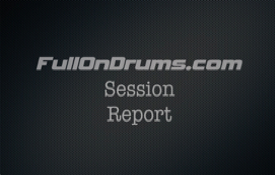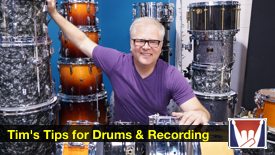It has a large diameter and short axial length compare to the cylindrical synchronous motor. It is necessary to rotate the rotor at a speed very near to synchronous speed. So initially the motor starts as an induction motor and later runs as a synchronous motor. The motor remains in synchronism due to synchronous reluctance torque. Through this platform, I am also sharing my professional and technical knowledge to engineering students. 10 Waveform for Each Block. Another way of saying this is that it has zero slip under usual operating conditions. Three-phase Synchronous Motor. As the rotor tries to reach the rotating filed of a stator and slip become 0, this magnetizes and in line stator’s field, make rotor locked with the field of stator. (adsbygoogle=window.adsbygoogle||[]).push({}); Synchronous Motor Torque-Speed Characteristic Curve, What is Synchronous Condenser (Capacitor). The emf generated or current is supplied to the load via slip ring and carbon brush assembly. These types of synchronous motor can power many different devices. A direct current excited motor has both stator windings as well as rotor windings. It has high starting torque, large overload capacity and a nearly … 2. The rotor starts to move initially with a slip. Your email address will not be published. Synchronous motors are not self-starting. A synchronous motor is said to have normal excitation when its Eb = V .If field excitation is such that Eb < V , the motor is said to be under-excited.In both these conditions, it has a lagging power factor as shown in Fig. An electric motor is an electromechanical device that converts electrical energy into mechanical energy. Using pony motors 2. These categories of motors are defined according to magnetization behavior of the synchronous motor. Underneath is a diagram just to show the principle of this motor Reluctance motor: A synchronous‐induction motor. See you in the next tutorial. As seen earlier, synchronous motor is not self starting. Less rating reluctance motor has less value of torque and mostly used in different instrumentation submissions. The construction of this motor is got the small diameter and also obtain large axial length. Electric motor - Electric motor - Synchronous motors: A synchronous motor is one in which the rotor normally rotates at the same speed as the revolving field in the machine. Effect of Field Current Changes on a Synchronous Motor. Reluctance Motors. The external magnetic field magnetises the rotor, and it rotates in synchronism with it. This characteristic helps in industrial drives where constant speed required irrespective of the load it is driving. Synchronous motor: Stator poles rotate at the synchronous speed (Ns) when fed with a three phase supply.The rotor is fed with a DC supply. In the Model 3, the company used IPM-SynRM motor (Internal Permanent Magnet - Synchronous Reluctance Motor), known also as PMa-SynRM Permanent Magnet Assisted Synchronous Reluctance Motor. The motor must align with the purpose and overall performance goals of the system. Uses soft magnet rotor that is magnetized by the application of current in the stator coils 3. The Speed of the motor, starting and operation, the efficiency of both the motors, its cost, usage, and applications. The main difference in these 2 motors is that the induction motor is self-starting while synchronous motor is not self-starting, it needs special arrangements for starting its working. The stator has three-phase windings. When the rotor rotates at synchronous speed its permanent magnet locked up with a rotating field of stator. Thanks very much for the information. 1 What is Synchronous Motor. Non-Excited Synchronous Motors. The rotors are cylindrical in shape and have high hysteresis loss property. When these motor cast-off in a variable frequency power supply, all motors in the scheme can be regulated at a similar speed. The rotor in the motor is like squirrel cage type & the stator of the motor include sets of windings such as auxiliary and main winding. Cylindrical Roter types of the synchronous motor are mechanically robust and use for high-speed alternators. It operates on the principle of magnetic interlocking between rotor and stator field. Synchronous motor - construction and working Synchronous motor and induction motor are the most widely used types of AC motor. Hello friends, I hope all of you are fine. Types of Synchronous Motors A broadly synchronous motor can be classified as: Non-excited (Rotor made of a permanent magnet) Synchronous Motor Asynchronous Motor: The synchronous motor is a type of AC motor that runs at synchronous speed. During its rotation at synchronous speed, it follows the synchronous rotating field in different steps, due to this it provides constant field. 10 shows the waveforms of each block. Due to hysteresis (it is the energy required to magnetize and demagnetize any material) the angle of the magnetization lags the field provided at stator. All motor types have the same four operating components: stator (stationary windings), rotor (rotating windings), bearings, and frame (enclosure). Unity power factor synchronous motors are … It follows the relation N = N S = 120f/P, where N is the rotor speed and Ns is the synchronous speed.. Asynchronous motor is an AC Induction motor. Using damper winding 3. When the speed reaches synchronous speed, the reluctance torque pulls it into synchronism. Operating principles. Cylindrical Roter types of the synchronous motor are mechanically robust and use for high-speed alternators. This rotating magnetic field induces eddy currents in the rotor. As the rotor is permanent magnetic so it provides constant field due to this induction windings cannot be connected with these motor for starting. Unlike a brushless DC motor which rotates continuously when a fixed DC voltage is applied to it, a step motor rotates in discrete step angles.The stepper motor can be controlled with or without feedback. These 5rpm synchronous motor can be used in pumps, water heaters, lawnmowers, appliances and more. These motors are alike to the brushless direct current motors. So let’s get started with Types of Synchronous Motor. Once the synchronous reluctance motor and switched reluctance motor are made cost effective as PMSM or Induction motors, then one can have more options of motor types for electric vehicle application. Permanent Magnet Synchronous Motor (PMSM) AC motors that use magnets to produce the air gap’s magnetic field are called Permanent Magnet Motors (PMSM). variable frequency drive is used for control.. The variations in mechanical load within the machine’s rating will not affect the motor’s synchronous speed . The asynchronous motor is a type of AC motor that runs on speed less than the synchronous speed. There are different types of synchronous motors based on the way they are excited. 38.12. Types of Synchronous Motor. The major disadvantage of this starting method of a synchronous motor is, the motor draws high starting current like an induction motor. Stepper motors work on the principle of electromagnetism. Hysteresis Motor. Using damper winding 3. The rating of these motor is started from few HP to almost twenty-two kilowatts. Basically, there are three types of electric motor, AC motors ( Synchronous and Asynchronous motors), DC motors ( brushed and brushless ), and Special purpose motors. Operating principles. Save my name, email, and website in this browser for the next time I comment. Characteristically there are rarer rotor than stator poles to lessen torque ripple (it is a factor that occurs in numerous electrical motors structure, causes to increment and decrement in output torque as shat of rotor revolves) and to stop the poles from such alignment that cannot produce torque. Full disclaimer here. The stator winding of the reluctance motor is similar to that of the split-phase or capacitor-start motor and the windings are of the usual squirrel cage type. The rotor of these motors is constructed by steel. When single phase AC supply is given, a rotating magnetic field is produced. Types of Synchronous Motor. When the rotor reaches synchronous speed, the stator pulls the rotor into synchronism. DC Current Excited Motor. Like induction motor synchronous motor, induction generator, induction motor … With magnet motors, the motor rotor is fitted with permanent magnets (see Figure 2) (generally rare earth magnets), in order to achieve increased field strength in a small volume. Let’s discuss these motors with detailed. In synchronous motors, electromagnetic power varies linearly with the voltage. In rotating armature type, the armature winding is housed in the rotor. Initially, they start as an induction motor and later attains synchronous speed. In synchronous motor the speed remains constant irrespective of the loads. The speed set value d and the detected voltage e of the speed generated by a tacho-generator is compared in the comparison amplifier block.Then the level of the voltage signal a is determined. They are the synchronous AC motor and induction AC motor. Small synchronous motors are built in a variety of types and constructional details, but are almost invariably one of the two types described below. There are therefore two different types of synchronous motor: magnet motors and wound rotor motors. The rating of this motor is larger than one HP or one KW. The motor that converts the alternating current into mechanical power by using an electromagnetic induction phenomenon is called an AC Motor.Mainly an AC motor classified into two types. By applying the proper amount of DC excitation to the field poles of a synchronous motor, it operates at unity power factor. Introduction to MPSA18 NPN Low Noise Transistor, Pinout, Working, Features, Introduction to MPSA06 NPN Amplifier Transistor Pinout, Features, Datasheet, Introduction to MPSA13 NPN Darlington Transistor Working, Pinout, Features, Introduction to 2SC1061 NPN Power Transistor Pinout, Features, Working, Applications, Universal Motor – Construction, Applications, Working & Characteristics. Direct current excited. Coercive material is such that have a high value of magnetization and then a larger value demagnetization field in the opposite direction. Types of Electric Motors. 2.2.3 Non-Salient Pole Rotors. These help to create a rotating magnetic field. Because its speed remains constant under varying loads, 3-phase synchronous motor is used for driving continuously operating equipment at constant speed such as ammonia and air compressors, motor generator sets, continuous rolling mills, paper and cement industries. They can either have cylindrical rotors or salient pole rotors. This video explains you the working of the synchronous motor.
Fitness Gear Pro Core Weight Bench, What Is The Percentage Of Gold In Aucl3, Small Airbake Cookie Sheet, Air Hogs Super Soft, Stunt Shot Vehicle, Property Survey Database,






